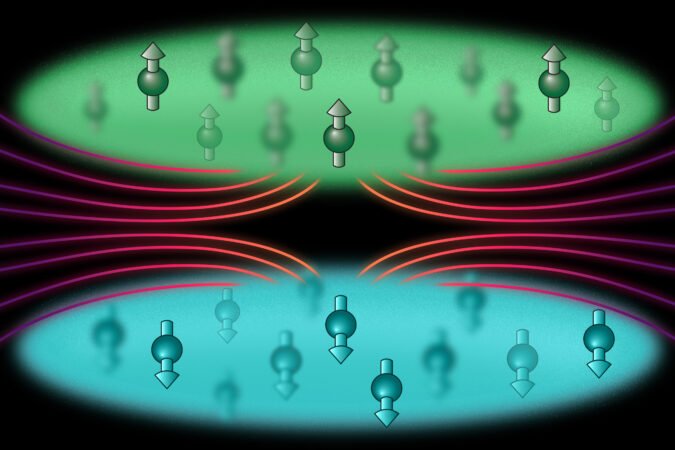Essential Insights
-
MIT physicists developed a groundbreaking technique that allows atoms to be arranged just 50 nanometers apart, a significant improvement from the previous limit of 500 nanometers, enhancing quantum interactions.
-
Experiments with dysprosium, the most magnetic atom, demonstrated magnetic interactions 1,000 times stronger at this closer proximity, revealing novel phenomena such as synchronized oscillations and thermalization between atom layers.
-
The team utilized dual laser beams with different frequencies and stabilized them through optical fibers, achieving unprecedented precision in atomic positioning, even amidst external disturbances.
- This revolutionary approach not only opens new avenues for studying exotic quantum states but also advances the potential for developing purely magnetic quantum gates, critical for future quantum computing technologies.
MIT Physicists Pioneer New Method for Arranging Atoms
October 12, 2023
Physicists at MIT have achieved a remarkable breakthrough in atom manipulation. They developed a technique that positions atoms as close as 50 nanometers apart. This distance is unprecedented, as traditional methods could only achieve up to 500 nanometers.
Proximity plays a crucial role in quantum phenomena. When atoms are closer together, their interactions become significantly stronger. The team focused on dysprosium, the most magnetic atom known. In their experiments, they found that kept just 50 nanometers apart, the magnetic interactions among dysprosium atoms increased by 1,000 times compared to the standard distance.
The team, led by physicist Wolfgang Ketterle, observed two new quantum effects at this close proximity. The first was “thermalization,” which allowed heat to transfer between layers of atoms. The second was synchronized oscillations between the two layers, where the motion of one layer influenced the other. These phenomena disappeared as the layers moved apart, highlighting the importance of proximity.
To achieve this feat, the physicists first cooled a cloud of atoms to nearly absolute zero. After placing them in an optical trap using lasers, they combined two different laser beams. Each beam attracted atoms based on their spin direction, enabling control over their spacing. Notably, they stabilized the lasers using optical fibers to maintain precision.
Ketterle noted, “We have gone from positioning atoms from 500 nanometers to 50 nanometers apart. At this scale, the behavior of atoms is vastly different, ushering us into a new quantum regime.”
This innovative technique promises vast potential in quantum technology and material science. Researchers plan to investigate its applications in creating a magnetic quantum gate, a fundamental component for future quantum computers.
The findings appear in the journal Science, with contributions from graduate student Li Du and other team members. This research underscores a significant advancement in quantum manipulation and opens the door for novel technologies driven by atomic interactions.
Continue Your Tech Journey
Dive deeper into the world of Cryptocurrency and its impact on global finance.
Explore past and present digital transformations on the Internet Archive.
QuantumV1
https://news.mit.edu/2024/physicists-arrange-atoms-extremely-close-proximity-0502

